Indexed In
- Open J Gate
- The Global Impact Factor (GIF)
- Open Archive Initiative
- VieSearch
- International Society of Universal Research in Sciences
- China National Knowledge Infrastructure (CNKI)
- CiteFactor
- Scimago
- Ulrich's Periodicals Directory
- Electronic Journals Library
- RefSeek
- Directory of Research Journal Indexing (DRJI)
- Hamdard University
- EBSCO A-Z
- Publons
- Google Scholar
Useful Links
Share This Page
Journal Flyer

Open Access Journals
- Agri and Aquaculture
- Biochemistry
- Bioinformatics & Systems Biology
- Business & Management
- Chemistry
- Clinical Sciences
- Engineering
- Food & Nutrition
- General Science
- Genetics & Molecular Biology
- Immunology & Microbiology
- Medical Sciences
- Neuroscience & Psychology
- Nursing & Health Care
- Pharmaceutical Sciences
Research Article - (2022) Volume 12, Issue 2
Assessment of Solid Waste Management Practices in Public Universities in Developing Countries: Case of Nangui Abrogoua University (Abidjan, Côte d’Ivoire)
Jean-Marie Pétémanagnan Ouattara1, Franck Michaël Zahui2*, Aman Messou1, Laurraine Marie Essi Loes1 and Lacina Coulibaly12Department of Agronomic, Forestry and Environmental Engineering, University of Man, BP 20 Man, Cote D'Ivoire
Received: 04-Jul-2022, Manuscript No. IJWR-22-15592; Editor assigned: 07-Feb-2022, Pre QC No. IJWR-22-15592 (PQ); Reviewed: 21-Feb-2022, QC No. IJWR-22-15592; Revised: 25-Feb-2022, Manuscript No. IJWR-22-15592 (R); Published: 04-Mar-2022, DOI: 10.35248/2252-5211.12.2.451
Abstract
Demographic evolution in developing countries has a significant impact on the number of training establishments, particularly public universities. Appropriate solid waste management strategies then become a major issue to guarantee the quality of the environment, the living environment, and the health of the personnel and students. However, in Côte d’Ivoire, very few studies focus on waste management practices in universities. This study aims to examine the management practice of solid waste in Nangui Abrogoua University (UNA). Key informant interview (e.g. Services and Structures), and visual assessment was carried out to identify the major sources and types of solid waste generated and management practices. In addition, solid waste samples were collected in a systematic way from different garbage container inside the university then segregated into twelve categories, to determine the net weight of each category as well as the total weight of the waste. The result showed that three types of solid waste are produced in the institution: ordinary waste (e.g. Paper, cardboard packaging, leftover food), hazardous waste (e.g. Chemical products, cotton soaked in blood, syringes) and inert waste (e.g. Soil cuttings, remains of gravel, concrete).These are managed by three actors: the Modern Infrastructure Company for Development in Côte d’Ivoire (MICDCI), private providers and the University Heritage Service. Waste is packaged in buckets and garbage bags inside service and activity sites, and in bins and garbage cans, outside ward sand in the university courtyard, to integrate the municipality’s household waste management circuit. About 2.5 tons of solid waste is produced daily in the University, of which 1.5 tons come from offices and services, and one ton, from university canteens. However, green waste and waste from informal businesses are incinerated in illegal dumps within the university. Wastes generated in UNA are dominated by the recoverable fraction [paper (20.92%), plastics (19.65%), cardboard (11.8%) glass (0.34%) and metals (1.69%)] and biodegradable fraction (26.04%). The current practice of waste management should be improved to ensure an adequate university environment. However, the composition of the waste offers good prospects for recovery and recycling.
Keywords
Solid waste management; Waste composition; Garbage packing; Medical waste; Chemical waste
Introduction
Solid waste management is a major environmental concern, in most cities in Sub-Saharan African countries, due to increased urbanization and demographics [1,2]. In these cities, piles of waste and garbage are observed, along the roads and in public spaces, due to the absence or lack of control of adequate strategies for household waste management [3,4]. This situation has a negative impact on the quality of the environment of these localities and the health of the populations through so-called environmental diseases, in particular diarrhea, malaria, cholera and typhoid fever [5,6].
These situations were also observed in the cities of Côte d’Ivoire. For this purpose of improving the management of household waste, the government has created specialized structures, namely the National Office for Sanitation and Drainage (ONAD) and the National Waste Management Agency (ANAGED) [7,8]. In spite of actions of those structures, solid waste management faces technical, material and financial difficulties [2,9]. This is the poor organization, with random execution of collection circuits and frequencies, the lower collection rate, covering 70% of the overall production of solid waste, insufficient and insufficiently trained staff, etc.
In the city of Abidjan the municipality’s solid waste production was around 1,490,000 tons in 2015, and amounted up to 1,650,000 tons in 2018, an increase of 9.4% and is expected to be around 2,000,000 tons in 2030 [7,10]. Thus, to better address the issue of solid waste management, several studies are increasingly being undertaken [2,11-16].
The studies carried out recently; in particular those of Effebi et al. [11], Possilétya et al. [14] and Yeo et al. [15] address the management of household waste. On the other hand, those of Kamelan [12], N’Zi et al. [13] and N’Guessan et al. [16] remain focused on the waste generated in healthcare establishments. Regarding household waste, studies have shown that they are composed of putrescible materials, kitchen scraps, leaves-straws-wood, textiles, cardboard, plastics, metals, glasses, stones and charcoal, mostly biodegradable [11,15]. However, according to Brisoux and Elgorriaga [7], the composition of waste depends on the standard of living of households. Households in higher standard dwellings produce more recyclable waste such as paper, cardboard and plastic, unlike less well-off residents who produce more putrescible materials. In addition, the higher the standard of living, the greater the volume of waste production, changes in living conditions are therefore accompanied by changes in the quality and quantity of waste. Consequently, according to Brisoux and Elgorriaga [7], it would be advisable to promote an adapted management practice which takes into account the different sectors of waste production activities, in order to put in place a good waste policy. Thus, the issue of the management of solid waste generated in training establishments such as public universities, whose numbers are increasingly impacted by the demographic growth of countries, should arouse the interest of researchers.
Indeed, a university is a place where thousands of students, teachers and support staff come every day and spend significant amount of time for academic and research purposes. In addition to construction and demolition wastes, large amounts of solid wastes are generated daily from several sources in the university such as offices, classrooms, lecture halls, laboratories, restaurants, halls of residence and other facilities [17-19]. However, apart from the fact that the population of the university constitutes an undeniable source of production of an enormous quantity of waste, the laboratories present within them are likely to generate hazardous waste (pungent, sharp and sharp objects and chemical waste), often found among those in health establishments [16,20,21]. However, no study has yet been carried out in Côte d’Ivoire, like those performed in African universities, particularly in Togo [22], Nigeria [17,23,24], Ethiopia [19,25], Kenya [26] and Tanzania [27], in order to assess the amount and pattern of waste generation. These studies have, however, succeeded in determining the composition and quantity of solid waste generated, used as a decision-making tool for the implementation of sustainable waste management programs in said universities.
This study aims to examine the solid wastes management in Nangui Abrogoua University (UNA), in order to improve the practices implemented and the quality of the environment of the institution spaces.
Literature Review
The life cycle of urban waste is often schematized, in developed countries, by the succession of five phases distributed in time and space: waste production, sorting and collection, recovery by the recycling, the treatment of the non-recoverable fraction and the final elimination in a developed site of an eco-compatible residue [28].
In developing countries, solid waste disposal is often limited to primary collection provided by associations, NGOs or SMEs (Figure 1). Secondary collection, often under the responsibility of the technical services of the municipalities, is poorly ensured due to a lack of operational and suitable rolling stock.
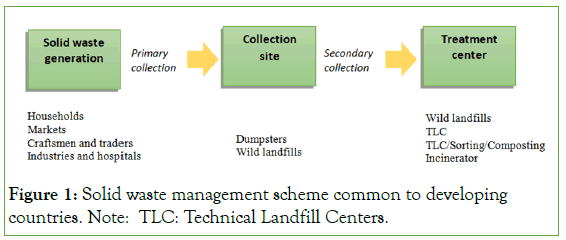
Figure 1: Solid waste management scheme common to developing countries. Note: TLC: Technical Landfill Centers.
The management of solid waste in Côte d’Ivoire is the responsibility of the National Waste Management Agency (ANAGED) which is a Public Establishment of an Industrial and Commercial nature created by Decree No. 2017-692 of October 25, 2017. In the district of Abidjan, household waste management is provided by two (2) private companies, ECO EBURNIE and ECOTI.SA. These are responsible for the pre-collection, collection and transfer of household waste to the Technical Landfill Center (TLC) of Kossihouen located at 43.3 km from the city of Abidjan (Figure 2). However, private pre-collectors are involved in the collection of household garbage to the collection centers [10].
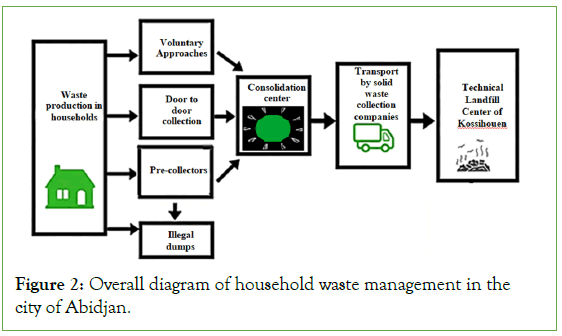
Figure 2: Overall diagram of household waste management in the city of Abidjan.
Study area
The study was conducted at the Nangui Abrogoua University (UNA), which was created on December 20, 1995, formerly “University of Abobo-Adjamé”.
The UNA has four Training and Research Units (UFR): Natural Sciences (UFR-SN), Environmental Sciences and Management (UFR-SGE), Fundamental and Applied Sciences (UFR-SFA) and Sciences and Technologies of Food (UFR-STA). It also has a Preparatory School for Health Sciences (EPSS), a Research Institute on New Energies (IREN), a Research Center in Ecology (CRE) and a Continuing Education Center (CFC).
The university housed a total of 8,272 people including 365 teacherresearchers and researchers, 281 administrative staff, 183 technical staff (medical, cleaning staff, etc.) and 7,443 students, in 2021
Materials and Methods
The data collection was carried out from March to April 2021 and required interviews with the services and structures of the NANGUI ABROGOUA University and equipment such as scales, tarpaulins and buckets for solid waste characterization. Indeed, the scales were used to weigh the different fractions of the waste after the latter had been segregated on tarpaulins, and the buckets served as containers for the different samples of waste collected from the garbage bins.
Assessment of solid waste and management practice
To examine the solid waste produced and the management methods practiced in the university, meetings were held with the heads of the university services and structures (i.e., general secretariat, Regional center for university works [CROU], heritage service, medico-social center, laboratories, restaurants, cleaning company, etc.) which are involved in the management of solid waste at the UNA. Interviews and questions animated these meetings to gather information relating to the nature and quantities of solid waste produced in the services, the mode of management of this waste, and the difficulties associated with their management.
In addition, the observation data (i.e., location of garbage bins, illegal dumps, Special waste storage place, state of cleanliness of spaces, etc.) was used to supplement the interviews, and to assess the esthetic quality of the study areas, and to get firsthand experience of how solid waste is actually managed.
Characterization of solid waste produced
The mass composition of the solid waste produced at Nangui Abrogoua University has been determined. For that, a sample of 100 kg of waste was taken from the garbage bins of the five waste consolidation points located in the university, on which the quartering method was applied to characterize the waste.
This method consisted in subdividing the primary sample (100 kg), previously homogenized, into four roughly equal parts and retaining a quarter after drawing lots [29]. The operation is repeated once more to obtain the final secondary sample which has been subjected to manual sorting. Figure 3 schematizes the quarter method used in this study.
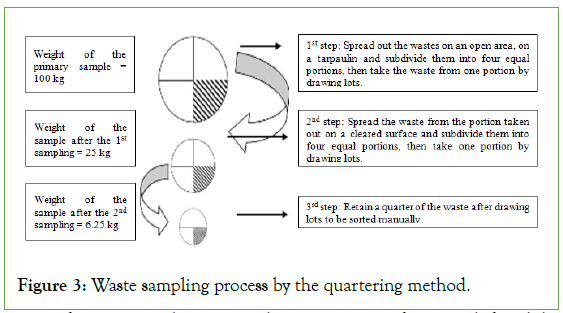
Figure 3: Waste sampling process by the quartering method.
To perform manual sorting, the categories of waste defined by MODECOM [30] and ADEME [31] were used. Thus, the following classification denoted in Table 1 was used.
| No. | Waste components | Contents |
|---|---|---|
| 1 | Putrescible materials | Food waste, other putrescible |
| 2 | Papers | Newspapers, magazines, reviews |
| 3 | Cardboard | Cardboard boxes, Cardboard packaging |
| 4 | Composites | Composite packaging |
| 5 | Textiles | Sanitary textiles, clothes, lingerie etc. |
| 6 | Plastics | Plastic films, rubber, plastic bag, plastic boxes for various products, etc. |
| 7 | Unclassified fuels | Wood, coal, other fuels, garden waste |
| 8 | Glass | Glass packaging, jars, colorful and colorless glasses |
| 9 | Metals | Iron metals, cans and aluminum materials, Other metal packaging, Other metal waste |
| 10 | Unclassified incombustibles | Pebbles |
| 11 | Hazardous waste | Sanitary waste, baby diapers, batteries and accumulators |
| 12 | Fine elements | Sand, soil, dust, ash |
Table 1: Solid waste components for solid waste characterization.
Data analysis
The mass percentage of each category of waste was calculated according Armijo et al. [32] as follows:

Where:
PC=the percentage of each category;
PL=the amount of category present in kg;
PT=the total weight of the sample in kg.
The data from this study were analyzed according to whether they were quantitative or qualitative. Quantitative data such as the weight of different waste categories were compared statistically to assess their difference. The latter followed a normal distribution; thus, the ANOVA test was used for their comparison. The difference was considered statistically significant when p<0.05.
The qualitative data (location of garbage bins, illegal dumps, storage places for special waste, state of cleanliness of spaces, etc.) were organized and summarized from the responses obtained from interviews and field observations.
Results and Discussion
Type of waste generated in the University
According to the nature of the solid waste and their impact on humans or the environment (ordinary solid waste, special waste and inert waste) [33], the three types were encountered at the Nangui Abrogoua University. Ordinary waste comes from administration, shops, general maintenance of buildings and green spaces of the university. This category of waste includes paper, cardboard packaging, plastic bags, food scraps, unsold items from shops and restaurants, green waste from gardens, used whiteboards, metal waste, etc. Because of their similarity to household waste, this waste enters the household waste management circuit of the district of Abidjan. No portion is sold compared to the practices in Hawassa University Campuses, Ethiopia [19], where a portion of leftover food was managed by selling to ranchers and giving it to poor-of-the poor. Figures 4A and 4B shows some ordinary waste encountered at the Nangui Abrogoua University.
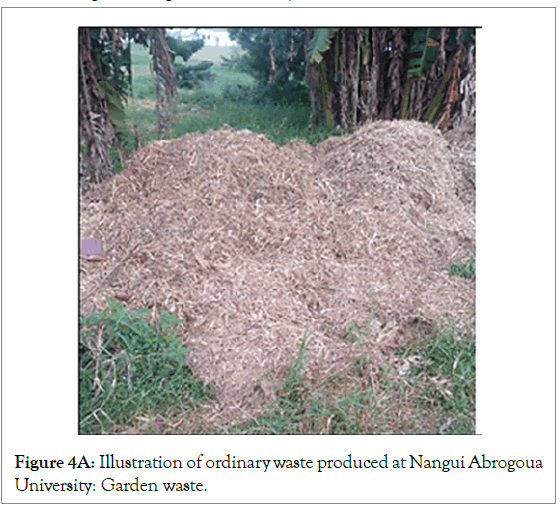
Figure 4A: Illustration of ordinary waste produced at Nangui Abrogoua University: Garden waste.
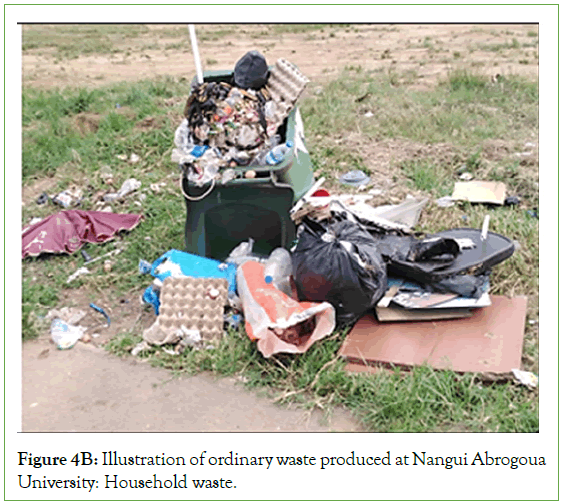
Figure 4B: Illustration of ordinary waste produced at Nangui Abrogoua University: Household waste.
Regarding to the special or hazardous waste, they result from the activities of research and laboratories, reprographics and the university health center. They include:
• Infectious waste which includes collection tubes, compresses and cotton soaked in blood or chemical product, soiled gloves, petri dishes, experimental biological material, biological treatment waste, absorbent papers, worn nose covers, etc., (Figure 5A).
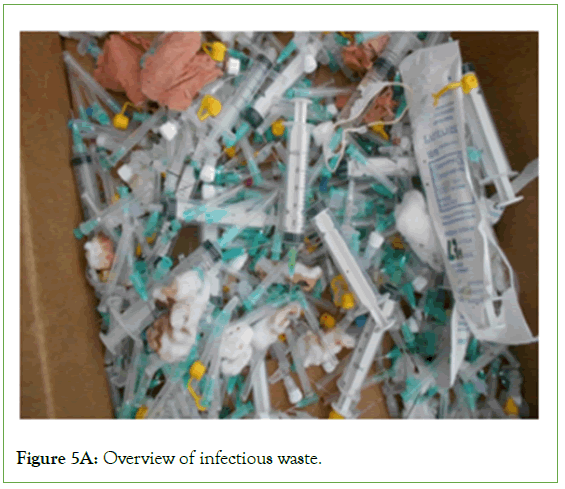
Figure 5A: Overview of infectious waste.
• Sharp-edged or sharp waste such as syringes, needles, scalpel blades, scalpels, pipettes, blades and coverslips, broken glassware, scissors, etc.
• Chemical waste which includes laboratory chemicals and their packaging, expired medicines and their packaging, insecticides and their packaging, detergents and their packaging, alcohols, solvents, etc.
• Waste of electrical and electronic equipment (WEEE) or e-wastes such as computers, printers, photocopiers, analysis devices, microscopes, refrigerators, freezers and used air conditioners, empty ink cartridges, used printer toners, etc., (Figure 5B).
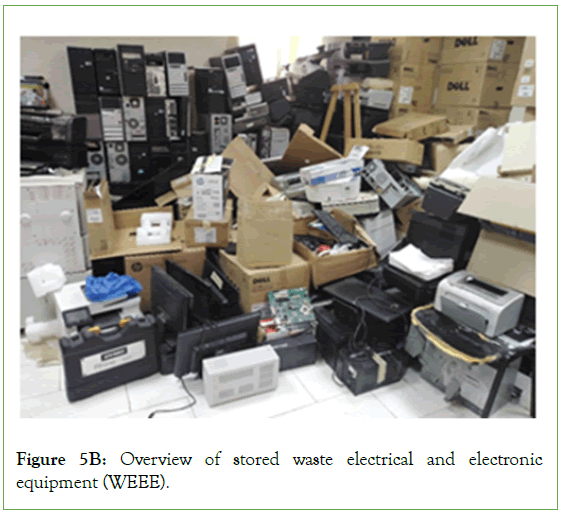
Figure 5B: Overview of stored waste electrical and electronic equipment (WEEE).
These wastes have also been identified in the work of Helelo et al. [19], Salguero-Puerta et al. [22], Dahlawi and Sharkawy [34] respectively, at Hawassa University Campuses (Ethiopia), the University of Lome (Togo) and at Imam Abdulrahman Bin Faisal University, Dammam, Saudi Arabia.
As for the inert waste identified in the university, it comes from construction sites (e.g. teachers’ offices, new university canteen, etc.) and from the establishment of the sewerage network, which were underway within of the university during this study. These wastes include soil cuttings, gravel, sand and concrete remnants (Figures 6A and 6B).
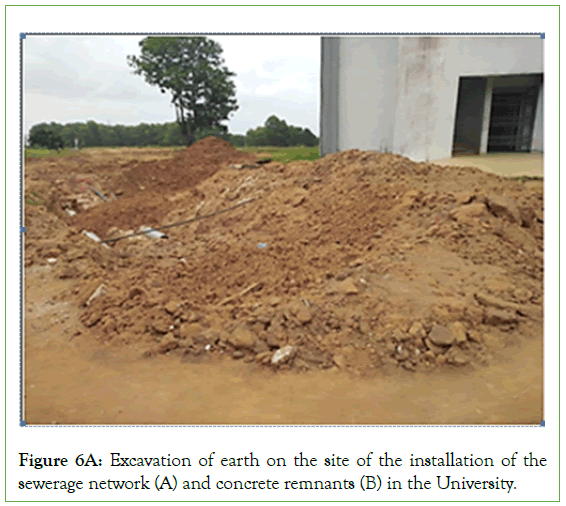
Figure 6A: Excavation of earth on the site of the installation of the sewerage network (A) and concrete remnants (B) in the University.
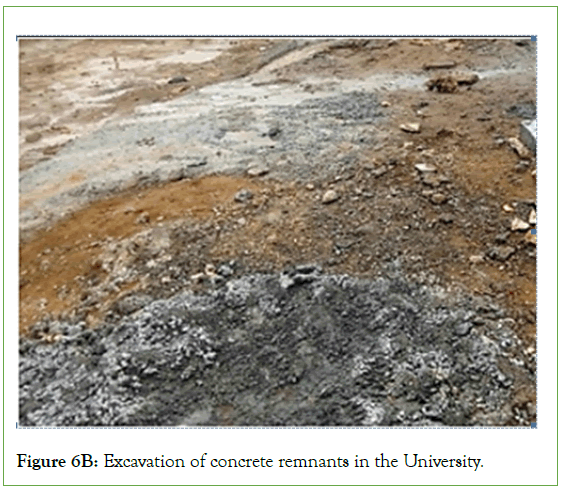
Figure 6B: Excavation of concrete remnants in the University.
This type of solid waste appears most often in the landscape of universities in developing countries due to the relentless improvements observed there through the construction of new buildings including restaurants, classrooms, amphitheaters, libraries, etc. These changes could be explained by the growing demand for infrastructure in the aforementioned educational institutions, to meet the exponential increase in staff [35,36].
Quantity of waste and management analysis
Several actors are involved in solid waste management at UNA, including:
The Modern Infrastructure Company for development in Côte d’Ivoire (SIMDCI), through a contract with the State of Côte d’Ivoire, ensures the management of solid waste. It employs 56 agents who are responsible for cleaning and collecting waste in the departments (offices, classrooms, laboratories, etc.) and green spaces of the university.
Private Service providers who collect the solid waste collected and send it to the household waste collection stations located near the university. There are three different service providers: One collects the waste collected by SIMDCI and the two others respectively recover the waste from the university canteen and that produced by informal businesses.
The university Heritage Service, which manages chemical waste, computer equipment and used laboratory analysis equipment.
However, these actors do not collaborate closely enough, which would constitute a disadvantage according to Ahsan et al. [37] and McAllister [38], in favor of a good solid waste management policy at the university.
The daily quantities of waste generated in the university, given by the SIMDCI, were estimated to 2.5 tons, of which 1.5 tons comes from offices and services, and one ton is generated by the university canteen. However, waste from informal businesses (student markets) is not taken into account in the estimates given by SIMDCI because the management of this waste is carried out under the responsibility of the businesses. These quantities of waste produced every day, both formally and informally in the university, require a good management policy to guarantee a living environment suitable for training and studies [22]. This inevitably requires knowledge of the current management mode practiced in order to improve its probable imperfections. In addition, knowledge of the composition of the waste would make it possible to develop strategies for recycling and recovering this waste [19,34].
Solid waste management practiced
Solid waste generated within the Nangui Abrogoua University is conditioned in buckets and garbage bags inside the service and activity sites. Outside, the wards and in the university courtyard, bins and garbage bins are available to receive solid waste. Figure 7 shows the types of bins used for conditioning.
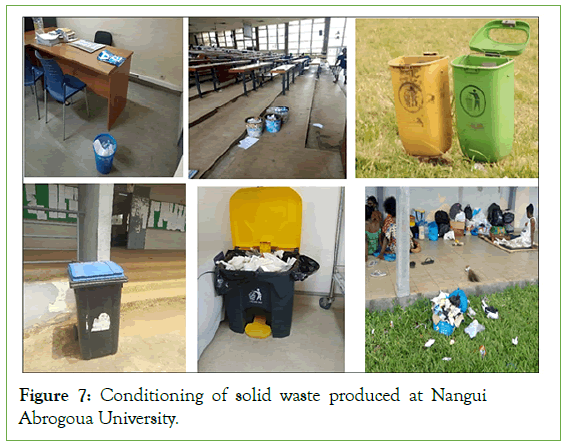
Figure 7: Conditioning of solid waste produced at Nangui Abrogoua University.
The evacuation of conditioned waste in classrooms and amphitheaters, administrative services, teachers’ offices, technical services, laboratories, as well as those conditioned in the bins of the courtyard is ensured by SIMDCI agents. The waste pre-collected is transported to five identified as consolidation points on the university site from where it is collected by a private service provider to be transported to the ECOTISA consolidation station located in Abobo municipality. The waste from the university canteen is also grouped in the bins of the said identified points, and then collected by private service providers to be sent to the consolidation station in the municipality of Abobo.
As for green waste, it is collected and gathered in places at the ends of the university to be incinerated in the open air. The same is true for waste from informal businesses (student markets), which is packaged in garbage bags and thrown into illegal landfills for incineration.
Regarding to special waste, Waste Electrical and Electronic Equipment (WEEE) is stored under the responsibility of the University Heritage Service. On the other hand, waste from the health center and research laboratories is thrown into the garbage bins located in these places, and then enters the university’s ordinary waste management circuit.
Overall, there is a lack of garbage bins at the university, irregular waste collection, and poor maintenance of garbage stockings. In addition, no garbage box is available at the university to collect the waste that is produced there. These situations lead to the deposit of waste on the ground around the garbage cans, the creation of illegal landfills inside the university and the open-air waste burning as seen in Figures 8 and 9.
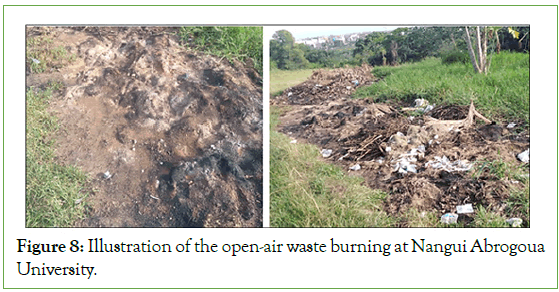
Figure 8: Illustration of the open-air waste burning at Nangui Abrogoua University.
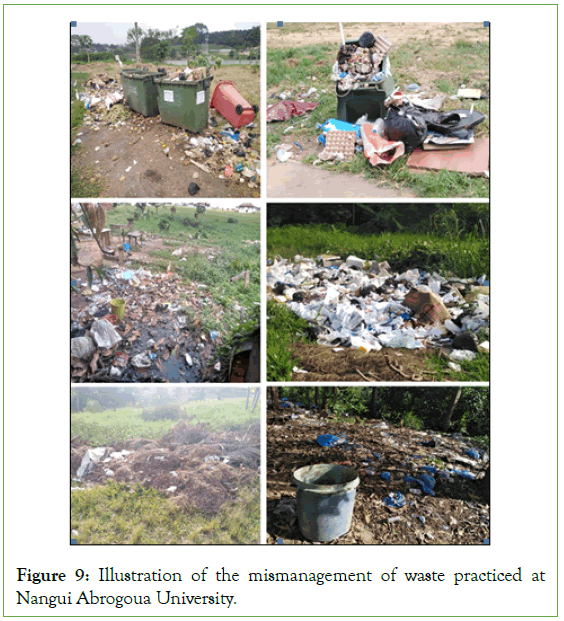
Figure 9: Illustration of the mismanagement of waste practiced at Nangui Abrogoua University.
This management method practiced at the UNA degrades the university environment and causes nuisance (i.e. release of foul odors, proliferation of mosquitoes and rodents, etc.). In addition, no sorting of waste is carried out either at the level of production sources or in the management circuit to separate the waste according to its nature. However, some waste such as plastic packaging and metal materials (empty cans) are collected by housekeepers to be reused or recycled. These waste management methods practiced are relatively similar to those observed in the university campuses of Hawassa, Ethiopia, in particular through the burning of certain waste and the fact that only limited solid waste is recycled [19]. However, in this university, leftover food was managed by selling to ranchers, giving it to poor-of-the poor, and the remaining was managed through dumping. Indeed, the recovery or recycling of said waste would both protect the student environment, be used for experimentation and generate income [34]. For instance, according to Helelo et al. [19], conversion of organic waste to biogas could reduce cooking firewood spending, greenhouse gas emission and other socio-economic and environmental impacts associated with solid waste management problem. Recycling of paper waste by selling to pulp and paper factory could also be a better strategy for the university and the environment [19,33].
Solid waste components
Table 2 shows the mass percentage of solid waste collected components in the garbage bins within Nangui Abrogoua University. We note that the waste from the garbage bins of the five waste consolidation points remains dominated by the putrescible fraction (26.04%), followed respectively by paper (20.92%), plastics (19.65%), cardboard (11.84%), unclassified fuels (10.15%), etc. The fine elements, representing 0.17% of the total mass, constitute the smallest fraction of the components of the waste collected in said garbage bins of the university. Statistical analysis reveals that the putrescible fraction is significantly greater than the others (ANOVA T test, p<0.05). This situation could be explained by the bloated number of students who eat lunch and dinner in the official university canteen, whose food and kitchen scraps end up in the university’s garbage cans. To this, would be added the leftovers of food and cooking from the restaurant of the teachers and the administrative and technical staff of the institution.
| Solid waste components | W1 % | W2 % | W3 % | W4 % | W5 % | Average % |
|---|---|---|---|---|---|---|
| by mass on wet basis | ||||||
| Putrescible materials | 28.25 | 26.5 | 25.38 | 26.97 | 23.11 | 26.04a |
| Papers | 19.1 | 21.52 | 25.55 | 18.38 | 20.06 | 20.92b |
| Cardboard | 11.51 | 11.96 | 11.46 | 12.5 | 11.79 | 11.84c |
| Composites | 5.72 | 7.83 | 7.27 | 5.33 | 6 | 6.43d |
| Textiles | 1.44 | 0.92 | 1.51 | 3.21 | 3.05 | 2.03e |
| Plastics | 23.58 | 18.3 | 16.76 | 21 | 18.6 | 19.65b |
| Unclassified fuels | 7.18 | 10.22 | 8.24 | 10.05 | 15.06 | 10.15c |
| Glass | 0.11 | 0.19 | 0.32 | 0.61 | 0.46 | 0.34fg |
| Metals | 2.12 | 1.44 | 2.2 | 1.5 | 1.21 | 1.69e |
| Unclassified incombustibles | 0.36 | 0.43 | 0.42 | 0.12 | 0.15 | 0.3fhi |
| Hazardous waste | 0.52 | 0.51 | 0.6 | 0.17 | 0.41 | 0.44gh |
| Fine elements | 0.12 | 0.18 | 0.29 | 0.15 | 0.12 | 0.17i |
| Total | 100 | 100 | 100 | 100 | 100 | 100 |
Table 2: Solid waste components percentages from the garbage bins of
the five waste consolidation points within the university values within the
average column followed by the same superscript alphabetic letter (i.e., a,
b, c, d, etc.) are not significantly different at P<0.05 (Anova T test).
However, the waste collected in the university’s garbage bins remains dominated by the fraction of recoverable materials, more or less recyclable (i.e., paper, cardboard, plastics, Glass and metals), with an overall percentage of 54.44% (Table 2). The predominance of paper, cardboard and plastics is explained by the fact that it is office and service waste which is mainly collected and stored in the garbage bins.
These results are relatively similar to those of Talsania and Modi [21] recorded at the School of Science Gujarat University. Thus, the percentage of 26.04% of the waste generated on the Nangui Abrogoua University could be introduced into the circular economy paradigm through composting and selling the rest to ranchers in the city, and 54.44% by reusing or recycling and selling the rest in the city [22,34]. As a result, the university could obtain income, as the case of the University of Lome (Togo) Campus [22], which in this case could be used in a policy of reduction of greenhouse gas emissions.
Sustainable solid waste management in the University (UNA)
In order to improve the management of solid waste at the university, it is important to increase the number of bins, and to dispose them in all the activity sectors of the institution, and to replace the bins damaged. This would avoid the increasing number of illegal dumps, seen at the ends of the university premises. However, it is advisable to regularly empty the bins and to have a garbage box inside the UNA to dump the waste collected in the various points.
At a Private institution of Higher Learning in Nigeria (Covenant University [CU]), for example, all the solid wastes generated are collected using appropriate waste collection bags and mobile bin positioned at strategic corners of the university premises [23]. This management is not limited to the level of collection in the said institution, because the waste materials after collection are segregated into plastics, bottles, nylon and organic materials by scavengers. According to Coker et al. [23] after these, nonbiodegradable solids are in the secondary market, which generates revenue in Covenant University. Therefore, the practice of sorting waste at the base, from the places where it is produced, would be a considerable asset at Nangui Abrogoua University, given the composition of the waste produced there.
The same observations were made by Sepideh Taghizadehet al. [39] and Parvez et al. [40] respectively to the University of Tabriz (Iran) and Indian Institute of Technology Roorkee (India), which should include in their overall waste management policy the following, so as to work towards a zero-waste campus:
• Avoiding of waste generation;
• Reducing waste generation;
• Reuse of generated wastes;
• Composting of organic wastes;
• Recycling of recyclable wastes;
• Sanitary disposal (landfill) of non-recyclable wastes.
In addition, Nangui Abrogoua University should increase the staff assigned to waste management, in order to promote effective action. To this end, formal collaboration between those involved in the management of university waste (Heritage Service, SIMDCI and private providers), and the establishment of a monitoring team to monitor sanitation issues in the University. In addition, special waste from laboratories and the health center must be assigned to, approved specialized structures. This would make it possible to increase the performance of Nangui Abrogoua University in terms of management of the solid waste generated, as observed, for example, in the Universities of Trento and Insubria (Italia) and Ural Federal University (Russia) [41].
Conclusion
It emerges from this study that the waste produced at Nangui Abrogoua University is of three types, namely ordinary solid waste, special waste and inert waste. This waste comes from classrooms and amphitheaters, offices of teachers and administrative and technical staff, restaurants, the health center, laboratories, green spaces and construction works.
Three actors are responsible for waste management in the university: the Modern Infrastructure Company for Development in Côte d’Ivoire (SIMDCI) is responsible for cleaning and collecting waste from services and green spaces. Private Service providers ensure the transport of solid waste collected at consolidation stations in the municipality of Abobo, and the university’s heritage service is responsible for the management of chemical waste, computer equipment and used laboratory analysis equipment.
The waste generated within the university is packaged in buckets and garbage bags inside service and activity sites, and in bins and garbage cans, outside the wards and in the university courtyard, to integrate the city’s household waste management circuit. The quantity of waste produced is between 2 and 2.5 tons per day, of which 1.5 tons come from offices and services, and one ton, generated by the university canteen. However, green waste and that of informal businesses (student markets) are incinerated in the open air, in places, at the ends of the university.
The waste collected in the garbage bins is divided into two main classes (i.e., recyclable waste and biodegradable waste). Recyclable waste (i.e. paper=20.92%, plastic=19.65%, cardboard=11.84%, glass=0.34% and metals=1.69%), with a total recovery rate of 54.44% of the total mass of University waste. Biodegradable waste represented by putrescible matter and kitchen scraps, constitutes on average 26.04% of the total mass.
Recommendations
Type of waste generated in the university
Based on the findings made, the following are hereby recommended in order to achieve a sustainable waste management system:
1. Increase the number of garbage bins, and dispose them in all areas of activity of the university;
2. Replace damaged garbage bins;
3. Regularly empty the garbage bins available;
4. Have a garbage box inside the UNA to dump the waste to collect;
5. Increase the number of staff assigned to waste management;
6. Practice waste sorting at source;
7. Destroy existing illegal dump sites;
8. Raise awareness by posting about good waste management practices;
9. Allocate the management of special waste from laboratories and the health center to approved specialized structures;
10. Organize informal businesses;
11. Create a formal collaboration between stakeholders in the management of university waste (Heritage Service, SIMDCI and private providers);
12. Set up a monitoring team to monitor sanitation issues at the university.
Author Contributions
J-M.P.O., F.M.Z., A.M., L.M.E.L. and L.C. participated equally in the conception and design of this research, and the elaboration of this paper. All authors read and approved the final manuscript.
Funding
This research received no external funding.
Acknowledgments: The authors would like to thank Nangui Abrogoua University, the heads of the university services and structures (i.e., general secretariat, Regional center for university works [CROU], heritage service, medico-social center, laboratories, restaurants, cleaning company, etc.) for consenting to and participating in this study.
Conflicts of Interest
The authors declare no conflicts of interest.
REFERENCES
- Hoornweg D, Freire M. Building sustainability in an urbanizing world: A partnership report. 2013.
- Kaza S, Yao L, Bhada-Tata P, Van Woerden F. What a waste 2.0: A global snapshot of solid waste management to 2050. World Bank Publications, 2018.
[CrossRef], [GoogleScholar]
- Dongo K. Analyse des déficiences dans la gestion du drainage urbain et des déchets solides liquides dans les quartiers précaires de Yopougon (Abidjan, Côte d’Ivoire): Approche cartographique-SIG, modélisation et socio anthropologie. ThèseUnique de Doctorat, Université de Cocody 230p. 2006.
- Bangoura MR. Gestion des déchets solides ménagers et ségrégation socio-spatiale dans la ville de Conakry. 2017.
- Pruss-Ustun A, Corvalán CF, World Health Organization. Preventing disease through healthy environments: Towards an estimate of the environmental burden of disease. World Health Organization; 2006.
- Bagalwa M, Karume K, Mushagalusa N, Ndegeyi K, Birali M, Zirirane N, et al. Risques potentiels des déchets domestiques sur la santédes populations en milieu rural: cas d’Irhambi Katana (Sud-Kivu, République Démocratique du Congo). VertigO: la revue électronique en sciences de l’environnement. 2013;13(2).
[CrossRef], [GoogleScholar]
- Brisoux L, Elgorriaga P. Les enjeux de la gestion des déchets à Abidjan : La vitrine de la Côte d' Ivoire face aux défis de l’insalubrité. 2018.
- ACP-EU. Evaluation des pertes, dommages et besoins suite aux inondations de juin 2018 à Abidjan, Côte d’Ivoire. 2019.
- Coulibaly SL, Sangaré D, Akpo SK, Coulibaly S, Bamba HB, Coulibaly L. Assessment of Wastewater Management and Health Impacts in African Secondary Cities: Case of Dimbokro (Côte D’Ivoire). J Geosci Environ Pro. 2016;4(8):15-25.
[CrossRef], [GoogleScholar]
- Gevalor. Plan de travail pour une meilleure prise en compte des polluants climatiques à courte durée de vie dans la gestion des déchets solides ménagers à Abidjan. 2015.
- Effebi KR, Ballet TG, Kone T, Toure M, Kouakou A. Évaluation de la gestion des déchets solides dans la commune de Treichville, Côte d’Ivoire. Afrique SCIENCE. 2017;13(3):206-16.
- Kamelan. République de Côte d’Ivoire / Plan national de gestion des déchets sanitaires 2016-2020. 2016.
- N’Zi KC, Traoré Y, Dindji MR, Acho YB, Bonny JS. Management des déchets médicaux et risque biologique à l’hôpital universitaire de Cocody, Côte d’Ivoire. Santé Publique. 2018;30(5):747-54.
[CrossRef], [GoogleScholar], [PubMed]
- Koné-Bodou Possilétya J, Kouamé VK, Fé Doukouré C, Yapi DA, Kouadio AS, Ballo Z, et al. Risques sanitaires liés aux déchets ménagers sur la population d’Anyama (Abidjan-Côte d’Ivoire). VertigO-la revue électronique en sciences de l'environnement. 2019;19(1).
[CrossRef], [GoogleScholar]
- Yeo EN, Akpo SK, Allali-Mangoua CL, Amani RA. Gestion intégrée des ordures ménagères dans le District d'Abidjan en Côte d'Ivoire: Cas des communes de Port-Bouët et Treichville. Int J Innov Appl Std. 2020;31(2):249-57.
- Barima YS, Kouassi KP, YÉO KA, N’Guessan KO. Gestion des déchets solides du centre hospitalier régional de Daloa (centre-ouest de la Cote d’Ivoire) et des risques associés. Environnement, Ingénierie & Développement. 2021.
[CrossRef], [GoogleScholar]
- Adeniran AE, Nubi AT, Adelopo AO. Solid waste generation and characterization in the University of Lagos for a sustainable waste management. Waste Manage. 2017;67:3-10.
[CrossRef], [GoogleScholar], [PubMed]
- Moreira R, Malheiros TF, Alfaro JF, Cetrulo TB, Ávila LV. Solid waste management index for Brazilian higher education institutions. Waste Manage. 2018;80:292-8.
[CrossRef], [GoogleScholar], [PubMed]
- Helelo AB, Senbeta AF, Anshebo ST. Assessment of Solid Waste Management (SWM) Practices in Hawassa University Campuses, Ethiopia. J Appl SCI Environ Manag. 2019;23(6):1081-6.
[CrossRef], [GoogleScholar]
- Pokou KC. Plan national de gestion des dechets sanitaires. 2017.
- Talsania P, Modi N. A review of waste generation, characterisation and solid waste management practices using bottoms-up approach in educational buildings. Int J Res Anal Rev. 2019;6(2):866-9.
- Salguero-Puerta L, Leyva-Díaz JC, Cortés-García FJ, Molina-Moreno V. Sustainability indicators concerning waste management for implementation of the circular economy model on the University of Lome (Togo) Campus. Int J Environ Res Public Health. 2019;16(12):2234.
[CrossRef], [GoogleScholar], [PubMed]
- Coker AO, Achi CG, Sridhar MK, Donnett CJ. Solid waste management practices at a private institution of higher learning in Nigeria. Procedia Environ Sci. 2016;35:28-39.
[CrossRef], [GoogleScholar]
- Ifegbesan AP, Ogunyemi B, Rampedi IT. Students’ attitudes to solid waste management in a Nigerian university: Implications for campus-based sustainability education. Int J Sustain High Educ. 2017.
[CrossRef], [GoogleScholar]
- Kassaye AY. Contemporary institutional solid waste management practices of Haramaya University, Eastern Ethiopia. African J Sci Technol Innov Dev. 2018;10(2):219-38.
[CrossRef], [GoogleScholar]
- Starovoytova D, Namango S. Solid Waste Management at a University Campus (Part 3/10): Waste Generators, Current Practices, and Compliance with relevant-law-provisions. 2018.
- Mbuligwe SE. Institutional solid waste management practices in developing countries: a case study of three academic institutions in Tanzania. Resour Conserv Recycl. 2002; 35(3):131-46.
[CrossRef], [GoogleScholar]
- Matejka G, Bouvet Y, Emmanuel E, Koulidiati J, Ngnikam E, Tanawa E, et al. Gestion maîtrisée des déchets solides urbains et de l’assainissement dans les pays en voie de développement: les besoins en études scientifiques et techniques spécifiques, et en outils méthodologiques adaptés. InColloque du développement durable à Ouagadougou, Brukina Faso. 2004.
- Guermoud N, Addou A. Etude et caractérisation des déchets ménagers de la ville de Mostaganem (Ouest-Algérie). Déchets Sciences et Techniques. 2014;66:45-50.
- MODECOM, 1993. Méthode de Caractérisation des Ordures Ménagères/ 2ème édition, ADEME éditions, Paris.
- ADEME, 2006. Campagne nationale de caractérisation des ordures ménagères ; Choix des catégories et des sous catégories pour l’analyse de la composition des déchets. ADEME, France.
- De Vega CA, Benítez SO, Barreto ME. Solid waste characterization and recycling potential for a university campus. Waste Manage. 2008;28:S21-6.
[CrossRef], [GoogleScholar], [PubMed]
- Abdel-Shafy HI, Mansour MS. Solid waste issue: Sources, composition, disposal, recycling, and valorization. Egypt J Pet. 2018;27(4):1275-90.
[CrossRef ], [GoogleScholar]
- Dahlawi S, El Sharkawy MF. Assessment of solid waste management practice in the university campus. Int J Sustain High Educ. 2021;22(3):561-575.
[CrossRef], [GoogleScholar]
- Diarra I, Kouadio K, Outtara Y, Maïga M. Les politiques de l’enseignement supérieur et leurs implications sur le développement économique et social de la Côte d’Ivoire de 1960 à 2006. Rapport final, Programme de Subvention ROCARE de la Recherche en éducation. 2007.
- Fiadzawoo JK, Yegblemenawo SA, Attati F. Dynamiser l’enseignement de l’écrit dans les classes à effectifs pléthoriques dans les lycées du Ghana : les avis des enseignants du FLE dans la métropole de Cape Coast. Eur Sci J. 2020;16(19):1857-7881.
[CrossRef]
- Ahsan A, Alamgir M, El-Sergany MM, Shams S, Rowshon MK, Daud NN. Assessment of municipal solid waste management system in a developing country. Chin J Chem Eng. 2014(1-11):561935.
[CrossRef], [GoogleScholar]
- McAllister J. Factors influencing solid-waste management in the developing world. 2015.
- Taghizadeh S, Ghassemzadeh HR, Vahed MM, Fellegari R. Solid waste characterization and management within university campuses case study: University of Tabriz. Elixir Pollution. 2012;43:6650.
- Parvez N, Agrawal A, Kumar A. Solid waste management on a campus in a developing country: A study of the Indian Institute of Technology Roorkee. Recycling. 2019;4(3):28.
[CrossRef], [GoogleScholar]
- Rada EC, Magaril ER, Schiavon M, Karaeva A, Chashchin M, Torretta V. MSW management in universities: Sharing best practices. Sustainability. 2020;12(12):5084.
[CrossRef], [GoogleScholar], [PubMed]
Citation: Ouattara JMP, Zahui FM, Nessou A, Loes LME, Coulibaly L (2022) Assessment of Solid Waste Management Practices in Public Universities in Developing Countries: Case of Nangui Abrogoua University (Abidjan, Côte d’Ivoire). Int J Waste Resour. 12:451.
Copyright: © 2022 Ouattara JMP, et al. This is an open access article distributed under the terms of the Creative Commons Attribution License, which permits unrestricted use, distribution, and reproduction in any medium, provided the original author and source are credited.

